

Imagine having to deal with all those issues while managing an entire event!
That’s precisely what event project managers have to do, so it’s no surprise that they need a little help managing it all.
In this article, we’ll cover everything you need to know about event project management, and we’ll highlight eight tips that event planners can borrow from project managers, along with the best event app to help you do it all.
This Article Contains:Let’s get this party started! 🥳
Summarize this article with AI ClickUp Brain not only saves you precious time by instantly summarizing articles, it also leverages AI to connect your tasks, docs, people, and more, streamlining your workflow like never before. Summarize article
Summarize this article for me pleaseEvent project management is all about planning, organizing, and maintaining a successful event. These events can be red carpet events, parties, conventions, trade shows, and anything else that you can celebrate. Although events always seem fun and easygoing, it requires a ton of work to get it to that point. The event planning process requires budgeting, scheduling, reservations, transport coordination, and, most importantly, good food! After all, you don’t want your guests feeling like this:
Here are three similarities between event management and project management:
1. Both use milestones to track progress
Both event and project managers use project milestones to ensure that everything is delivered on time.
What are milestones?
Milestones are basically checkpoints that show you when you’ve completed significant events or tasks. In project management, this could be finalizing the project plan.
Since events have a ton of moving parts, milestones help event managers ensure that everything is going according to plan.
2. Both use task lists to stay organized
Task lists are simple to-do lists that usually contain short-term goals. Once you complete these goals, you get a step closer to your milestones.
Project managers and event planners use task lists to make sure no task is left undone. Imagine forgetting to organize any music, leaving your guests feeling like this:
Here’s an example of an event planning task list:
3. Both require cross-team collaboration
Project management relies on the combined effort of the project team, finance team, marketing team, production team, and a whole lot of others to deliver a project on time.
Similarly, to create a successful event, you need:
You need all hands on deck if you don’t want your event to go down in history (or the ocean) as one of the worst events ever!
Event project managers have to manage the event from the initial conception to the successful completion of the event.
An event planner is basically a superhero since they have to deal with things that are out of their control, like sudden bad weather conditions, delayed flights, and power outages.
On top of their superhero duties, here are some other responsibilities of an event manager:
If only the event manager had hired us. 😉
An event planner has similar duties to a project manager. The only difference is that an event manager has to have more patience since they have to keep people fed, warm, happy, and entertained!
To prevent your patience from wearing thin, here are eight tips you can borrow from project managers:
Tip 1: create a project plan
First, you’ll need to come up with an event concept.
This includes determining what type of event you’ll be hosting, what the event’s goals are, specific time constraints, and a detailed breakdown of the tasks and team members involved.
A. Goals
You can set a tangible goal like getting 500 guests to attend the event, or you can set intangible goals like creating awareness for environmental sustainability. #SaveThePlanet 🌳
Whatever you choose, you’ll need to use a tool like ClickUp, to measure your progress towards those goals.
Wait… What’s ClickUp?
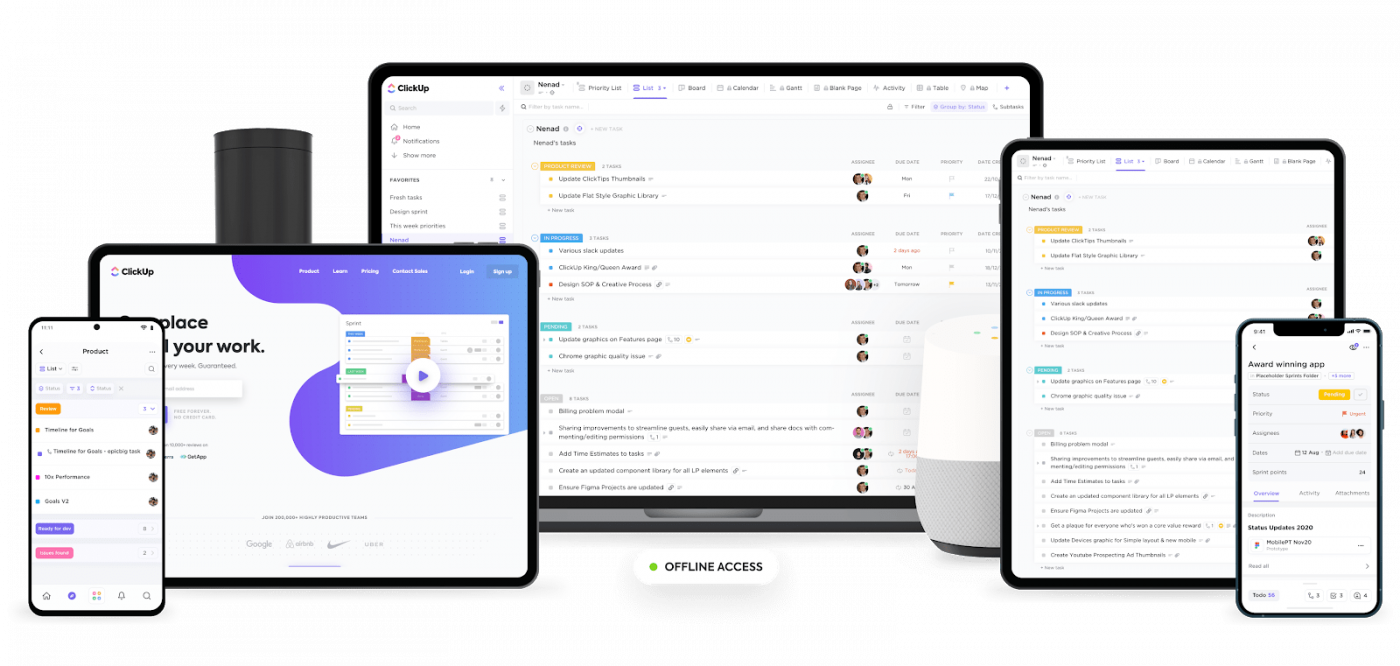
ClickUp is one of the world’s highest-rated productivity and event management software used by highly-productive teams in small and large companies.
With features like Docs that let you create beautiful event programs to helpful Reminders that make sure you’ll never forget to pick up the cake, ClickUp is the most event-filled project management tool out there.
Now, let’s get back to how ClickUp can help you set event Goals.
Goals in ClickUp are high-level objectives that can be broken down into smaller Targets.
Every time you complete a Target, you get closer to accomplishing your goal.
ClickUp will also display your goal progress in percentages, so you know exactly where you’re at.
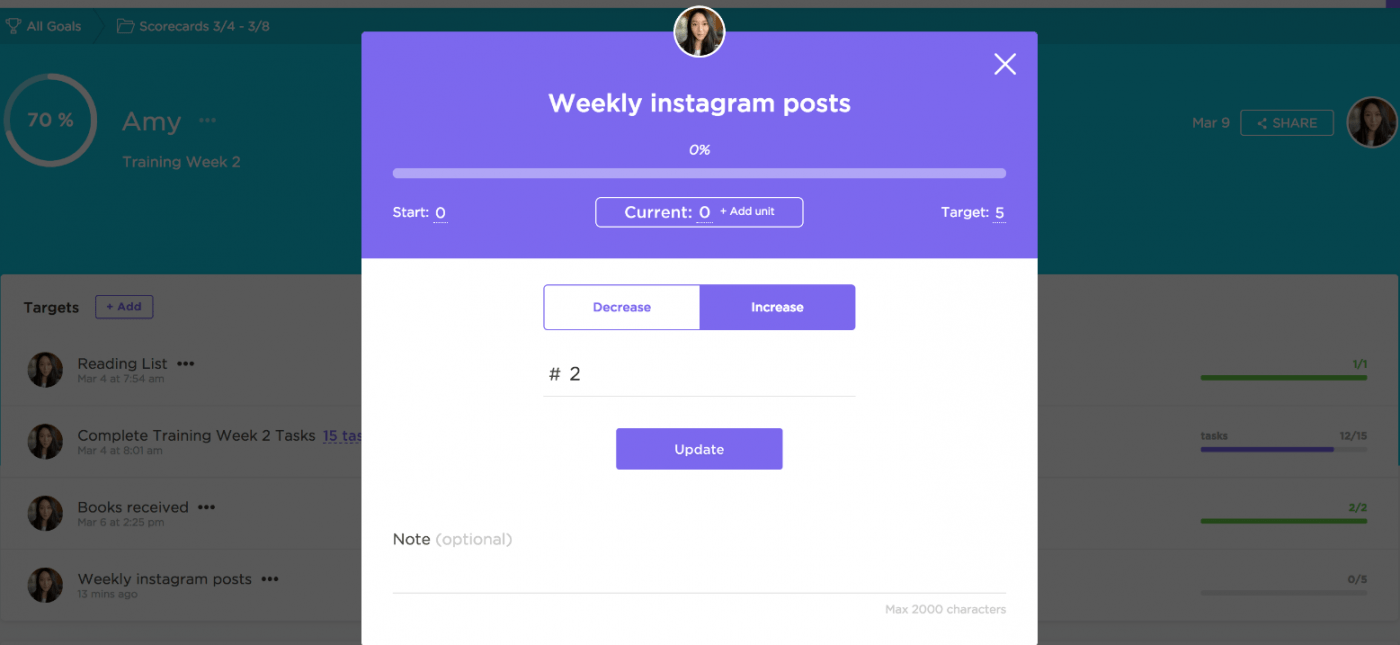
B. Constraints
When planning an event, you’re bound to run into a few constraints.
This could be budget constraints, a small venue, a hard deadline, or limited team members.
It’s crucial to identify these constraints so that you can organize the event with those constraints in mind.
A great event organizer will use constraints as an opportunity to get creative! For example, if you’ve got limited space in your venue, you could open up the side doors to create an extra tented area. 🎪
ClickUp can help you manage these constraints using project management charts, event planning templates, and views:
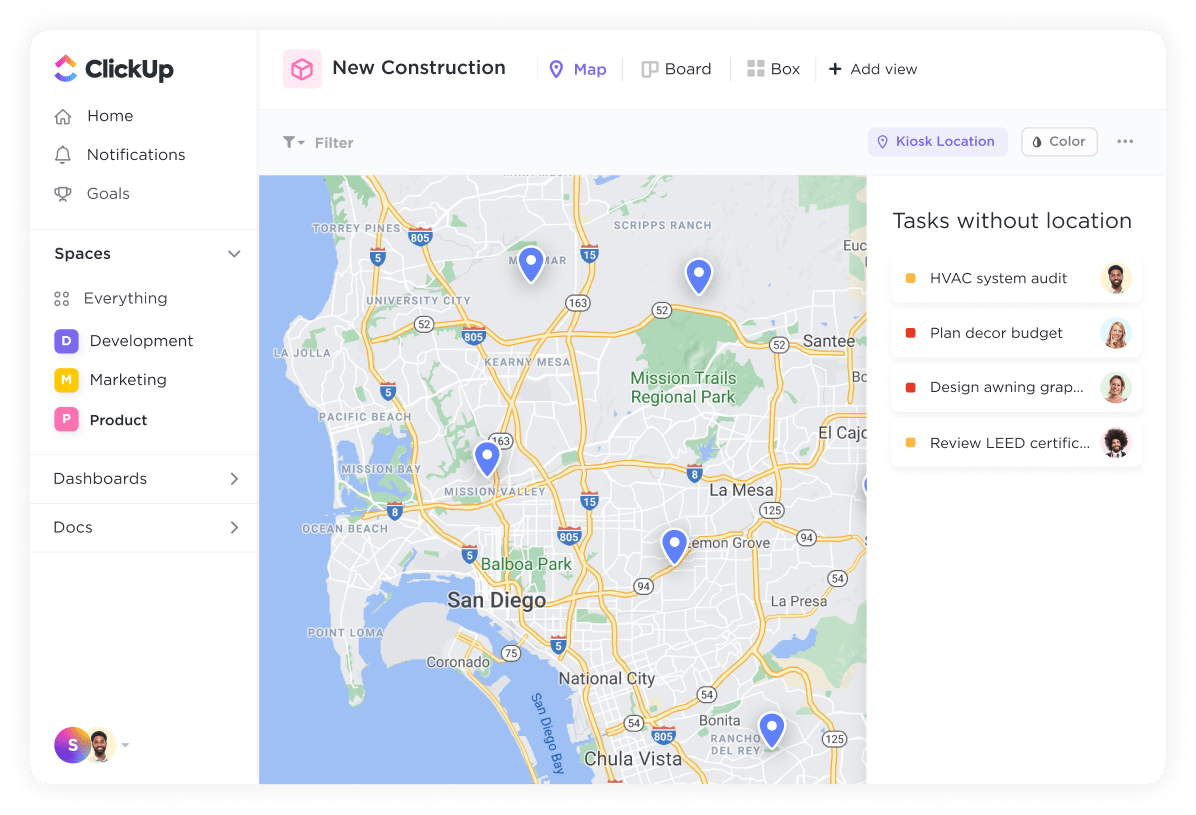
C. Task delegation
To manage events properly, you need to break down large tasks into smaller chunks of work and assign due dates to them.
For example, to secure a venue, you need to:
Here, you should also select an event project team and assign specific tasks to team members.
Luckily, ClickUp can help you with all the above.
ClickUp also lets you create simple Task Checklists and assign to-dos to a specific team member.
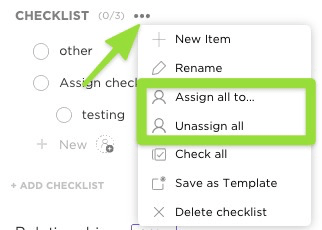
Effective task delegation helps teams avoid making huge mistakes like booking your keynote speaker on the wrong flight.
Tip 2: set milestones
Now that you’ve got your tasks and deadlines lined up, you need to set some milestones.
Your milestone could be to sell 400 tickets a week before the event date, or it could be to gain 250 Twitter followers two weeks after the event has ended.
Once you turn on ClickUp’s Milestones ClickApp, tasks are turned into progress markers.
You can also see your Milestones in the Gantt Chart view. They’ll be represented as diamond shapes so you can easily see all the big, shiny events that need to be completed.🔶
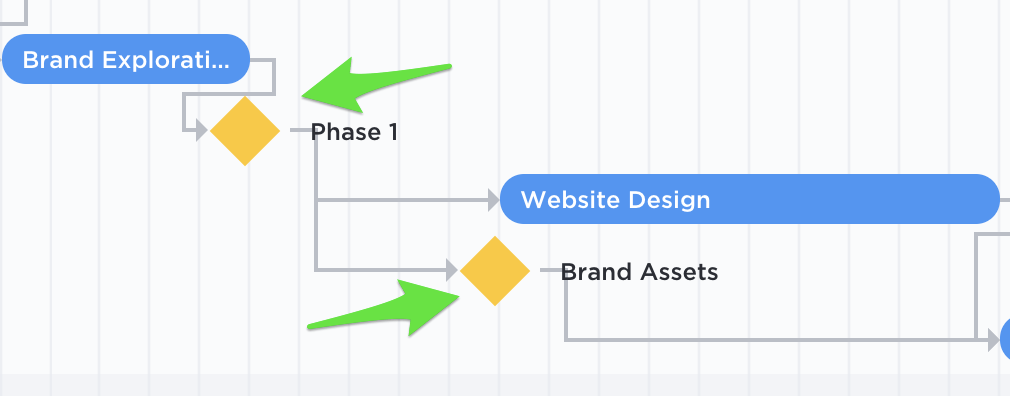
Tip 3: teamwork makes the event work
To organize a successful event, you need to make sure everyone knows their responsibilities.
Communicating the project plan with every department and setting up weekly team meetings will keep everyone on the same page and boost team collaboration.
This way, if you’re hosting a red carpet event, your crew can work together with ease to roll out a fantastic event:
With ClickUp, you can also set Custom Roles for every project.
This way, everyone has access to the right documents and knows what role they need to play.
Your event team also needs a way to communicate swiftly. With ClickUp’s Chat view, your team can discuss anything, from upcoming tasks to event excitement.
Docs in ClickUp are the perfect place for you to create any digital document that can be shared with team members and internal stakeholders.
Sometimes a face-to-face meeting isn’t necessary. That’s why ClickUp has a Zoom Integration that lets you quickly jump on Zoom calls without having to leave ClickUp!
But, if you prefer old-school meetings, simply set recurring tasks for your weekly meetings, so you never forget about them:
Tip 4: always track progress
Event professionals understand the importance of tracking progress towards project tasks and deadlines.
Keeping track of progress will help your event team determine how much work is left and if deadlines will be met. In addition, it will help you keep your clients informed about any delays.
ClickUp makes progress tracking an absolute breeze.
With Custom Statuses, you can add different stages to your event project, like ‘logistics,’ ‘invitations,’ and ‘event day.’ This way, you can create an event workflow that works for you.
Need to keep a close eye on how your high-end corporate event is progressing?
Dashboards give you a high-level overview of your event. Here, you can monitor project progress, employee performance, and bottlenecks in your workflow.
You can also add Sprint widgets like Burnups charts, Burndown charts, Cumulative Flow diagrams, and Velocity charts to your Dashboard to make sure you throw the best black-tie event:
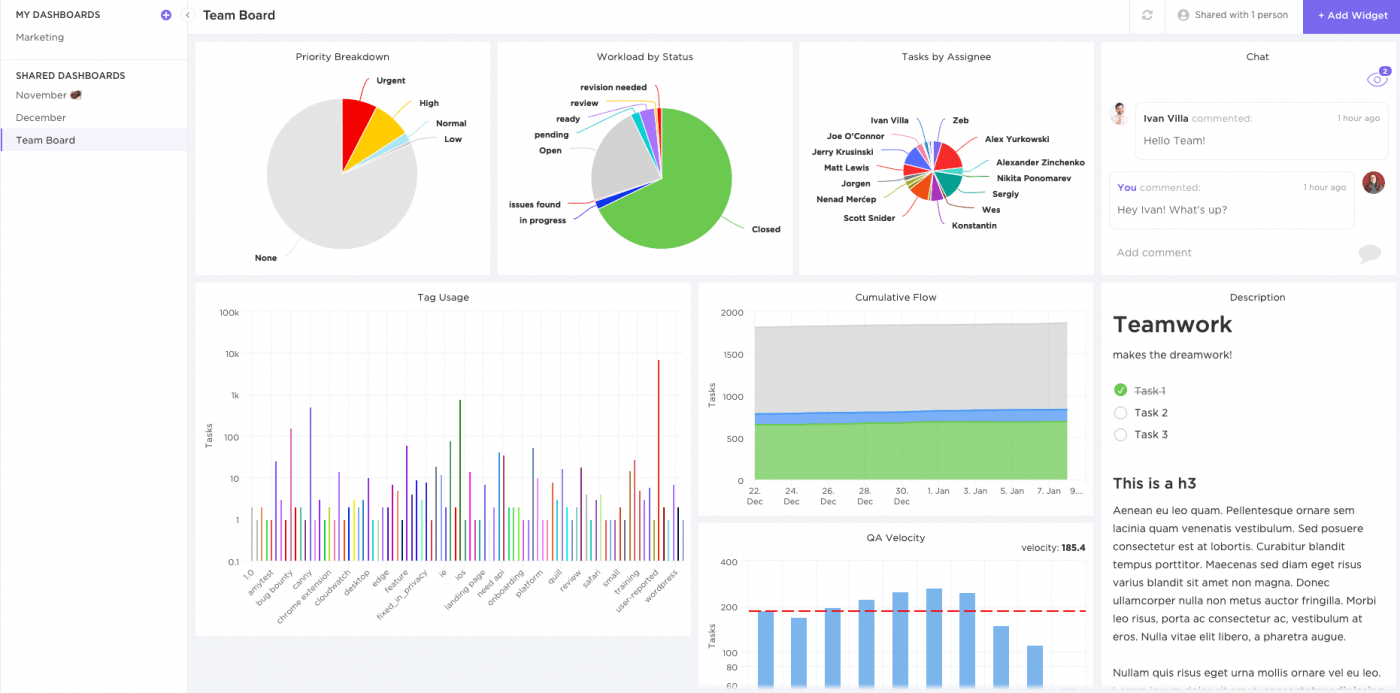
Tip 5: exhibit leadership and confidence
Exhibiting excellent leadership skills and confidence will help you keep your team motivated.
This is especially important for risk management.
What do we mean?
Events always have a lot going on, and sometimes things can go wrong. For example, a fire could start, or a fight could break out.
Whatever disaster happens, you can’t have your guests and team running up and down like headless chickens.
The trick is to remain calm and collected so your team can follow suit.
Not sure how to handle the hustle and bustle of project management?
Here are 3 project management tips for busy managers.
Tip 6: be flexible
Being a flexible event manager means that you’ll be able to handle any delays, bottlenecks, and other challenges.
And being a flexible teammate means that you’ll listen to other people’s opinions to get the best results. This is incredibly important for event management since anything can change at the last minute, and you’ll have no choice but to adapt.
But with a flexible project management tool, like ClickUp, you can handle anything that comes your way.
ClickUp has tons of flexible views for every department in your organization:
Tip 7: deliver a great finished product
Remember when we mentioned that an event project manager has to monitor events from their conception to completion?
Yeah, well, project managers have to do the same. Perhaps this is a trick that project managers learned from event planners. 😉
It doesn’t matter if a small fire started in the kitchen or if one of the DJs had to be replaced at the last minute. The only thing that matters is the success and quality of the event.
The event’s outcome is what your guests will take with them for weeks and months after the event.
A fantastic way to ensure that your future events are even more successful is to collect feedback from your guests and employees.
ClickUp’s Form view lets you build beautiful custom Forms. These Forms can be shared via a link or built into pages. Form responses are automatically turned into tasks and can be moved through a workflow when you’re ready.
Tip 8: debrief
Debriefing only happens once the event has ended.
All the performers are flying back to their hometown, the event photos are all over social media, and orders are being processed.
Now, you’ll need to schedule a meeting with your project team and clients to discuss what went well and what could be improved.
To make this process easier, you should ask your employees to note any problems they run into throughout the event planning process.
Speaking of taking notes, ClickUp’s Notepad is a free online space for your event team to jot down ideas and issues in real-time. You can even convert your notes into tasks for the debriefing session.
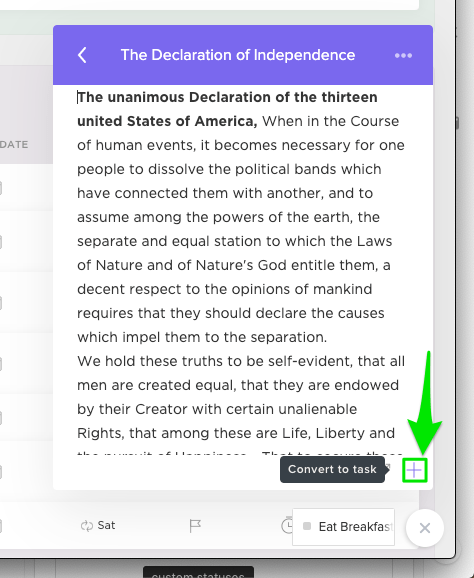
You thought this was the end of this event?
Well, get ready for the after-party cause we’re not done yet.
Here are even more ways ClickUp can help you manage your events:
Summarize this article with AI ClickUp Brain not only saves you precious time by instantly summarizing articles, it also leverages AI to connect your tasks, docs, people, and more, streamlining your workflow like never before. Summarize article